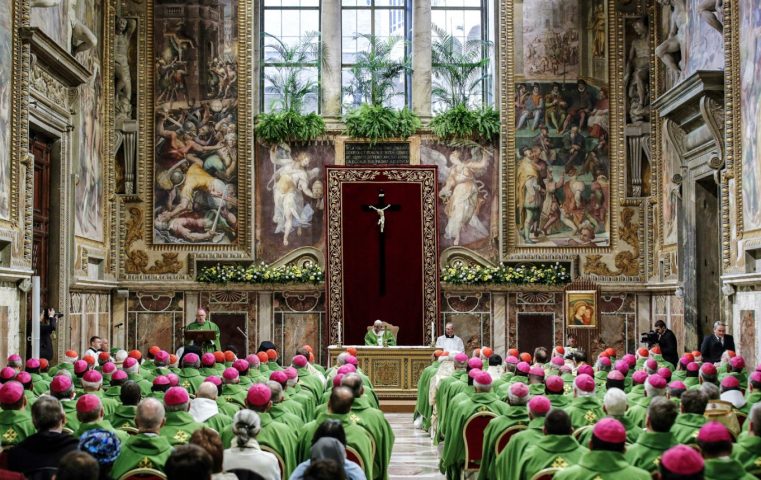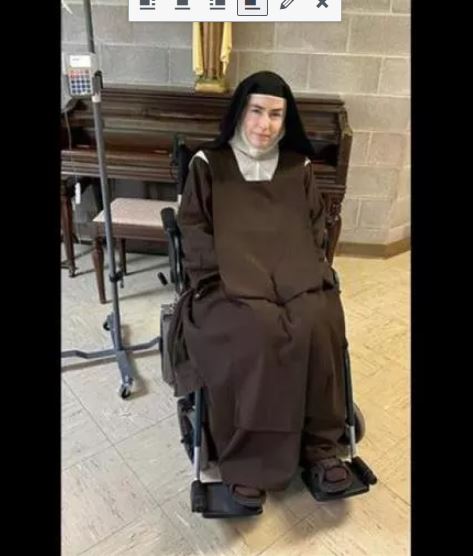Will the Abuse Summit Be a Turning Point for the Church?

Children Don’t Need ‘Day Care For All,’ They Need Their Mothers, by Joy Pullmann
March 1, 2019
Louisiana Takes Action Against Disciplined Abortionist
March 1, 2019
Fr. Raymond de Souza, Catholic Herald, 28 February, 2019
There was undoubtedly a good spirit at the summit, but storm clouds are ahead
The Vatican’s clerical abuse summit was many things at the same time, some of them contradictory. The summit was the sixth major initiative on sexual abuse that Pope Francis has launched in six years, and all of the previous five have been rolled back, in whole or in part. So the evaluation of this summit will depend on the follow-through.
For a pope whose pastoral strategy is “begin processes” rather than prescribe procedures, it is plausible that the 2019 summit will be a spur to genuine change. If so, it will be because of matters spoken in public – in the presence of the Holy Father and the leading bishops of the world, covered in detail by the media – that have not been spoken so clearly before.
The voices of women were highlighted, and cannot be “unheard” after the pain they expressed, and the righteous anger. One spoke of being beaten and sexually assaulted by a priest, beginning at age 15 and continuing over many years. She was forced into multiple abortions. To have that evil, which cries to heaven, spoken openly in the Church, in such a setting, is genuinely new. It will be hard to go back to business as usual after hearing of that level of wickedness and corruption in the priesthood.
Cardinal Reinhard Marx, one of the Holy Father’s closest advisers, spoke frankly about records not being kept, or even being “destroyed” to cover up abuse. That it happened is by now well known, but that it was said openly by such a senior voice is new. That too cannot be unsaid.
What will come of the summit? Here the contradictions arise, which does not mean that nothing will happen, but rather that it is not yet clear.
The contradictions began in the staging of the summit. The Holy Father himself said that it was necessary to “deflate” expectations, yet the Vatican media operation treated it like a super-synod, complete with daily press conferences and a torrent of written statements. Expectations were deflated in word but inflated in practice.
Pope Francis concluded the meeting by calling for “an all-out battle” against sexual abuse, not just in the Church, but to “eradicate this evil from the body of humanity … for we are dealing with abominable crimes that must be erased from the face of the earth.”
Such crimes will never be erased entirely, of course – as the Holy Father argued implicitly in the first part of his closing address, when he detailed at length that the “plague” of sexual abuse was widespread in society, is present historically in every culture and takes place mostly in the family.
In what was the most unusual papal address in recent memory, the Holy Father quoted detailed data from documents on sexual abuse produced by Unicef and the World Tourism Organisation. It sounded at times like the sort of thing Holy See diplomats might present at a UN meeting. Indeed, Pope Francis promised further action based on eight points developed by the World Health Organisation.
The rhetoric of the summit tended towards the extravagant. While the Holy Father argued that the task at hand was to rid the world of sexual abuse, Archbishop Mark Coleridge of Brisbane, preaching at the final Mass, argued for a “Copernican revolution” in the Church.
“For us, the Copernican revolution is the discovery that those who have been abused do not revolve around the Church but the Church around them,” he said. “In discovering this, we can begin to see with their eyes and to hear with their ears; and once we do that, the world and the Church begin to look quite different.”
That might mean nothing more than that pastoral solicitude ought to be for the victims, not the villains. What does it mean for the Church to revolve around victims of sexual abuse, or anyone for that matter other than Christ Himself? At times during the summit participants seemed to lose sight of the big picture of the Church’s mission. Certainly, that mission includes the safety of minors, but it is much more. After guaranteeing victims’ safety and punishing offenders, the Church has a grave duty to help victims centre their lives around Christ again.
The summit dealt with the tension between the theoretical (a conversion of pastoral thinking) and the practical (actually doing things differently). The Holy Father began the meeting with an insistence that people had a right to expect “concrete” actions. Yet the principal speakers, drawn from the senior cardinals closest to Pope Francis, were asked to speak about attitudes and approaches – clericalism, collegiality, synodality, transparency, accountability and discernment – rather than concrete measures. Yet there were practical measures suggested: Cardinal Blase Cupich of Chicago listed a dozen ways that bishops might be held accountable, complete with footnotes.
After everything was over, it was left to Fr Federico Lombardi SJ, the former director of the Holy See press office who moderated the summit’s plenary sessions, to announce that Pope Francis would issue a motu proprio “providing rules and regulations to safeguard minors and vulnerable adults within Vatican City State”. He added that the Congregation for the Doctrine of the Faith (CDF) would issue a vademecum to bishops “explaining their juridical and pastoral duties and responsibilities with regard to protecting children”.
Those measures have been deployed before, though less formally. In 2011, the CDF asked all the episcopal conferences in the world to submit such guidelines. At the summit, Archbishop Charles Scicluna noted that all countries had done so, save for six in war-torn areas.
So what might those new measures include? At the outset of the summit, Pope Francis provided the participants with 21 points for consideration. The status of the points was not clear. They were assembled from submissions to the summit, so they were not the Holy Father’s conclusions, but clearly he thought them worthwhile. Reaction to the 21 points focused on two things – proportionality in penalties and protecting the rights of the accused.
The text called for bishops to observe the “traditional principle of proportionality of punishment with respect to the crime committed”. It did not appeal for “zero tolerance”, a policy which has come to mean that priests should be permanently removed for one incidence of sexual abuse of a minor, however defined. There was little appetite to discuss any backing away from “zero tolerance” at the summit, but it was notable that Pope Francis raised the issue.
As for the rights of accused priests, a key issue is the publication of names of those accused, including those whose cases have not been sufficiently investigated. The Holy Father’s 21 points quite clearly questioned that indiscriminate practice (now sweeping across the United States), but the summit did not really take it up. Indeed, Cardinal Marx argued that releasing data on abuse allegations was the only way to restore public trust. “When you give the impression you’re hiding something, that won’t be successful,” he said.
On one point there was agreement – there was to be no discussion of homosexuality. At least officially. Prelates did discuss the “elephant in the sacristy” as it has been described for a generation now, but Archbishop Scicluna was adamant about the formal agenda. The summit was about minors, and sexual abuse of minors has nothing to do with homosexuality, full stop.
Often during the summit it seemed as though sexual abuse had very little to do with sex at all. The dominant theme throughout was “abuse of power”, of which sexual abuse was just one manifestation – more of a symptom than the disease. Archbishop Coleridge began his homily by noting that the Sala Regia, where the Mass was held, “invites us to contemplate power” in the light of the Gospel.
Now it remains to be seen whether the “concrete” actions the Holy Father desires will be implemented and, if they are, whether they will endure or be reversed.
There was undoubtedly a good spirit at the summit, a sense that a corner had been turned. But there are storm clouds ahead. As the summit closed, the Associated Press published a story which alleged that in the case of the Argentine Bishop Gustavo Zanchetta, the Holy Father’s protégé, the Vatican knew that he was molesting seminarians years before the Pope permitted him to resign in 2017 – and then gave him a new Vatican post.
Fr Raymond J de Souza is a priest of the Archdiocese of Kingston, Ontario, and editor-in-chief of convivium.ca
https://catholicherald.co.uk/magazine/will-the-abuse-summit-be-a-turning-point-for-the-church/




